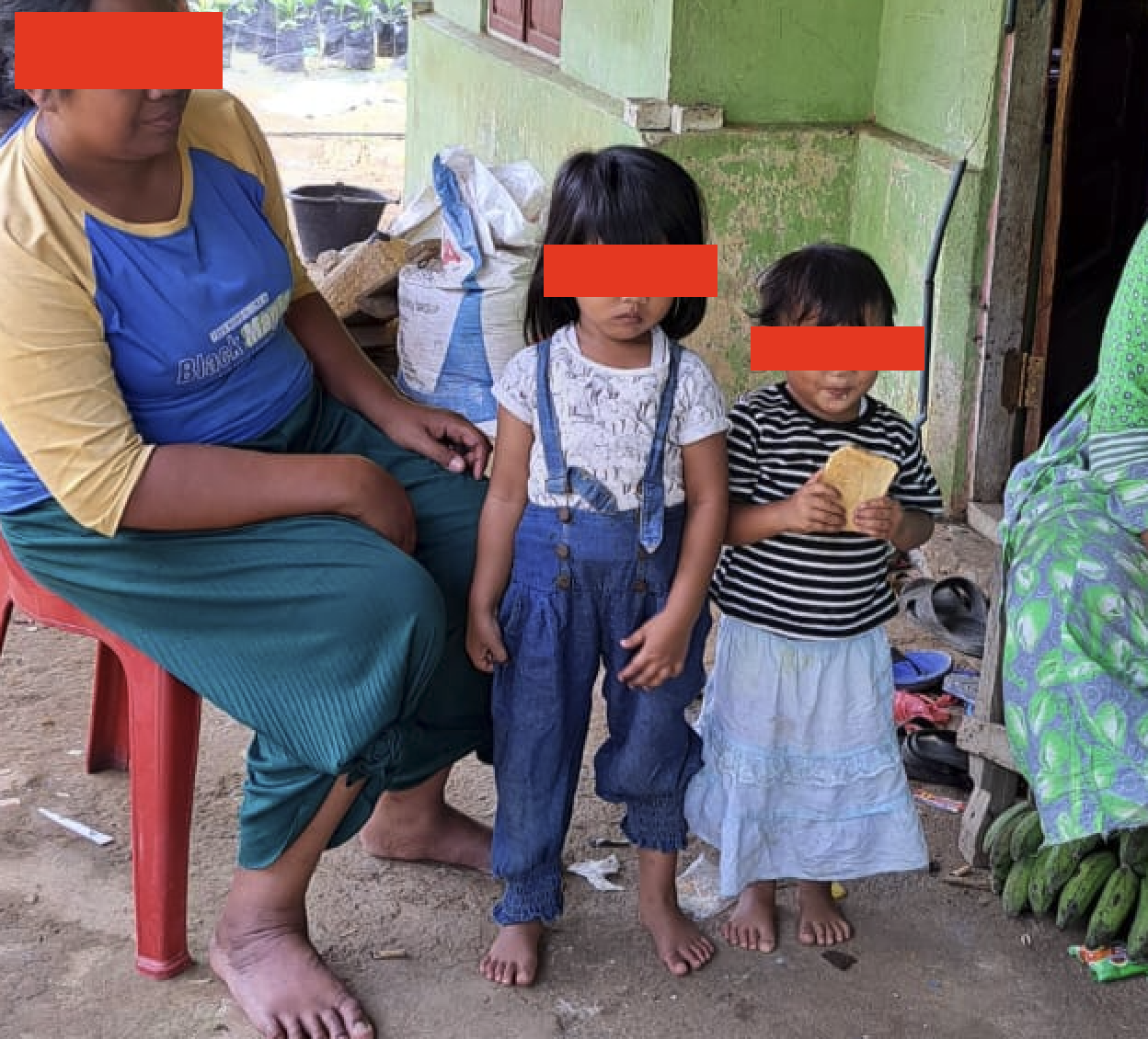Abstract
Malnutrition, especially the stunting category, is a big problem for the people in Pasaman today, because it has a broad impact on aspects of life which include health, social, culture and the economy. This study aims to identify the knowledge of the people in Pasaman about fulfilling nutrition at 1000 HPK and knowing the eating patterns of the Pasaman community at 1000 HPK. This study used qualitative research methods. Data was collected through participatory observation techniques and in-depth interviews. With the number of informants as many as 35 people. The results showed that in general, the community's knowledge of fulfilling nutrition in 1,000 HPK had received counseling and socialization from the village midwife and Posyandu cadres. However, this knowledge has not been seen in the people's diet at 1,000 HPK. The practice of daily eating patterns during the 1,000 HPK era was still the same as the habits that occurred before there was counseling. Food for pregnant and lactating women is prioritized is a matter of taste and preference, not about the nutritional content of food. Likewise with baby food 0-6 years, mothers already know that babies must be given exclusive breastfeeding, but there are still some mothers who do not give breast milk, because they think that breast milk is not filling for babies.
References
Atmarita, & Zahrani, Y. (2018). Situasi Balita Pendek (Stunting) di Indonesia. Buletin Jendela : Data Dan Informasi Kesehatan, 1, 1–56.
Buisman, L. R., Poel, E. Van De, Donnell, O. O., & Doorslaer, E. K. A. Van. (2019). What explains the fall in child stunting in Sub-Saharan Africa? SSM - Population Health, 100384. https://doi.org/10.1016/j.ssmph.2019.100384
Damayanti, R., Nugroho, A. B., Triarda, R., & Sari, I, P. (2021). Konteks Sosial-Kepercayaan & Warisan Kelembagaan: Faktor Berkembangnya Stunting Di Tingkat Lokal : Kajian Tentang Konteks Sosial-Kelembagaan Tumbuh dan Kembangnya Stunting di Trenggalek. Sosioglobal : Jurnal Pemikiran dan Penelitian Sosiologi, 5(2), 129-148. https://doi.org/10.24198/jsg.v5i2.32119
Dani, V., Satav, A., Pendharkar, J., Ughade, S., Jain, D., Adhav, A., & Sadanshiv, A. (2015). Prevalence of under nutrition in under-five tribal children of Melghat: A community based cross sectional study in Central India. Clinical Epidemiology and Global Health, 3(2), 77–84. https://doi.org/10.1016/j.cegh.2014.08.001
Dewey, K. G. (2020). Reducing child stunting: Moving forward on evaluating effectiveness of programs. Journal of Nutrition, 150(11), 2843–2845. https://doi.org/10.1093/jn/nxaa278
Foster, G., & Anderson, B. G. (1986). Antropologi Kesehatan (1st ed.). Jakarta: UI-Press.
Galasso, E., & Wagstaff, A. (2019). The aggregate income losses from childhood stunting and the returns to a nutrition intervention aimed at reducing stunting. Economics and Human Biology, 34, 225–238. https://doi.org/10.1016/j.ehb.2019.01.010
GNR. (2018). Shining a Light to Spur Action on Nutrition.
Kalangie, N. S. (1994). Kebudayaan dan Kesehatan: Pengembangan Pelayanan Kesehatan Primer Melalui Pendekatan Sosiobudaya. Jakarta: KBI.
Keesing, R. M. (1997). Teori-Teori Tentang Budaya, 52(Sosial dan budays), 4–31.
Kemenkes RI. (2021). buku saku hasil studi status gizi indonesia (SSGI) tingkat nasional, provinsi, dan kabupaten/kota tahun 2021. Angewandte Chemie International Edition, 6(11), 951–952., 2013–2015.
Kementerian Desa Pembangunan Daerah Tertinggal dan Transmigrasi. (2016). Situasi Balita Pendek.
Kementerian PPN/Bppenas. (2018). Intervensi Penurunan Stunting, (November).
Kesehatan, K., Indonesia, R., Menkes, D., & Moeloek, N. (2018). Cegah stunting dengan perbaikan pola makan, pola asuh dan sanitasi (1), (1), 1–2.
Meiyenti, S. (2006). Gizi Dalam Perspektif Sosial Budaya (Pertama). Padang: Andalas university Press.
Menko PMK. (2021). Kementerian Koordinator Bidang Pembangunan Manusia dan Kebudayaan Republik Indonesia, 5–6. Retrieved from www.kemenkopmk.go.id
Pelto, G. H. (1987). Cultural issues in maternal and child health and nutrition. Social Science and Medicine, 25(6), 553–559. https://doi.org/10.1016/0277-9536(87)90079-7
Rosmalina, Y., Luciasari, E., & Ernawati, F. (2018). Upaya Pencegahan Dan Penanggulangan Batita Stunting: Systematic Review Interventions for Reducing Stunted of Children Under 3 Years: A Systematic Review. Gizi Indononesia, 41(1), 1–14. https://doi.org/p-ISSN: 0436-0265 e-ISSN: 2528-5874
Ruswati, et al., (2021) Risiko Penyebab Kejadian Stunting Pada Anak. Jurnal Pengabdian Kesehatan Masyarakat: Pengmaskesmas, 1(2), 34-38, https://doi.org/10.31849/pengmaskesmas.v1i2/5747
Simbolon, D. (2014). Pengaruh Kepemilikan Jamkesmas Terhadap Status Kelahiran Dan Kejadian Stunting Pada Baduta Indonesia ( Analisis Data Ifls 1993 – 2007 ) Effect Of The Poor Health Insurance On Birth Status dan kemungkinan terjadinya lost generation di Indo- 2002 dilaksanak, 03(02), 55–65.
Susanti, E. M., Handayani, O. W. K., & Raharjo, B. B. (2017). Implementasi Penatalaksanaan Kasus Gizi Buruk Di Wilayah Kerja Puskesmas Cilacap Utara I. Unnes Journal of Public Health, 6(1), 47. https://doi.org/10.15294/ujph.v6i1.11726
Tumilowicz, A., Beal, T., & Neufeld, L. M. (2018). A review of child stunting determinants in Indonesia. Wileyonline Library, (October 2017), 1–10. https://doi.org/10.1111/mcn.12617
UNICEF. (2019). State of the World’s Children 2019: Children, food and nutrition. Unicef. Retrieved from https://www.unicef.org/media/63016/file/SOWC-2019.pdf
Yu, S., & Tian, L. (2018). Breeding Major Cereal Grains through the Lens of Nutrition Sensitivity. Molecular Plant, 11(1), 23–30. https://doi.org/10.1016/j.molp.2017.08.006

This work is licensed under a Creative Commons Attribution-NonCommercial 4.0 International License.
Copyright (c) 2023 ETNOSIA : Jurnal Etnografi Indonesia





